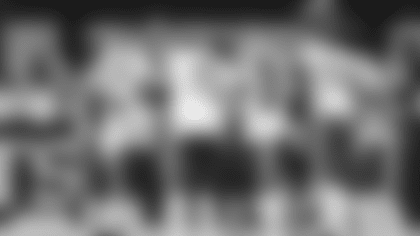
Now that we know it's a "fair assessment," in GM Joe Douglas' phrase, that the Jets will be plucking a quarterback with their second pick of the draft in less than three weeks, let's take a look at how QBs have fared over the last decade based on where they were drafted.
The short question: Is there a difference between how first-pick-of-the-draft QBs and second-pick QBs perform in their pro careers?
The short answer: Not much.
Eight QBs have been taken first overall since 2010, while four have been selected at No. 2. Here is a summary of how those two groups of signal-callers have fared in their careers in passing, starting win-loss records and Pro Bowl appearances/player:
| DraftPos | #QBs | Cmp% | Rating | WLPct | PBs/QB |
|---|---|---|---|---|---|
| No. 1 Picks | 8 | 61.8 | 87.8 | .509 | 1.4 |
| No. 2 Picks | 4 | 63.1 | 88.4 | .495 | 0.3 |
It's not a large sampling size, and it combines the statistics from last year's rookie No. 1, Joe Burrow, with the multi-season career stats of Andrew Luck, Cam Newton and Sam Bradford.
Still, the numbers seem to say it's a coin toss. No. 2 picks are slightly more accurate and produce a small improvement in passer rating. But No. 1 picks have a better winning percentage and more all-star selections.
If we expand the numbers to four groupings in the entire first round, they don't resolve themselves much:
| DraftPos | #QBs | Cmp% | Rating | WLPct | PBs/QB |
|---|---|---|---|---|---|
| Nos. 1-2 | 12 | 62.2 | 88.0 | .505 | 1.2 |
| Nos. 3-9 | 8 | 61.7 | 86.5 | .452 | 0.3 |
| Nos. 10-19 | 7 | 61.9 | 88.3 | .459 | 0.9 |
| Nos. 20-32 | 7 | 61.6 | 86.7 | .533 | 0.3 |
The sampling-size issue really shows up here. Sam Darnold (Jets, 2018) and Blake Bortles (Jaguars, 2014) are both third overall picks with lower metrics that pull down the 3-9 group. Meanwhile, Patrick Mahomes (Chiefs, 10th, 217) and Deshaun Watson (Texans, 12th, 2017) lift the 10-19 cluster, both of them in passer rating and Mahomes in win-loss. And the lowest group, 20-32, wouldn't be so impressive without the 102.6 rating and .811 win percentage of Lamar Jackson (Ravens, 32nd, 2018).
We thought the numbers in general would be of interest but there isn't much in the way of discernible trends, except maybe that the first and second picks combined are a little more accurate, win a bit more and go to more Pro Bowls. But we already knew that.
One other nugget mined from this research may be a surprise. Of the 22 QBs taken in Round 1 from 2010-17, only two remain active with the team that drafted them — Mahomes and Watson. Ten are still active but are with at least their second team. Ten more are no longer playing.
So probably the biggest lesson here is that each tier of the first round produces some QBs who are high-flying and others who are low-hanging. If you have the first pick, you could select a Luck or a Newton, but you also could get a Jameis Winston (.400 W-L percentage) or a Bradford (84.5 rating for four different teams). In the middle of the round, you could find yourself a Mahomes or a slow starter such as a Josh Rosen or a Dwayne Haskins. Low in Round 1, you may uncover a Lamar Jackson or a Johnny Manziel.
"It isn't an exact science," Douglas reminds us all, adding that the Jets' predraft process, for QBs and for the entire draft class, won't be done until draft night, April 29.
After that, the Jets and their fans will have their fingers crossed that the Two taken then is the one they've been waiting for.














